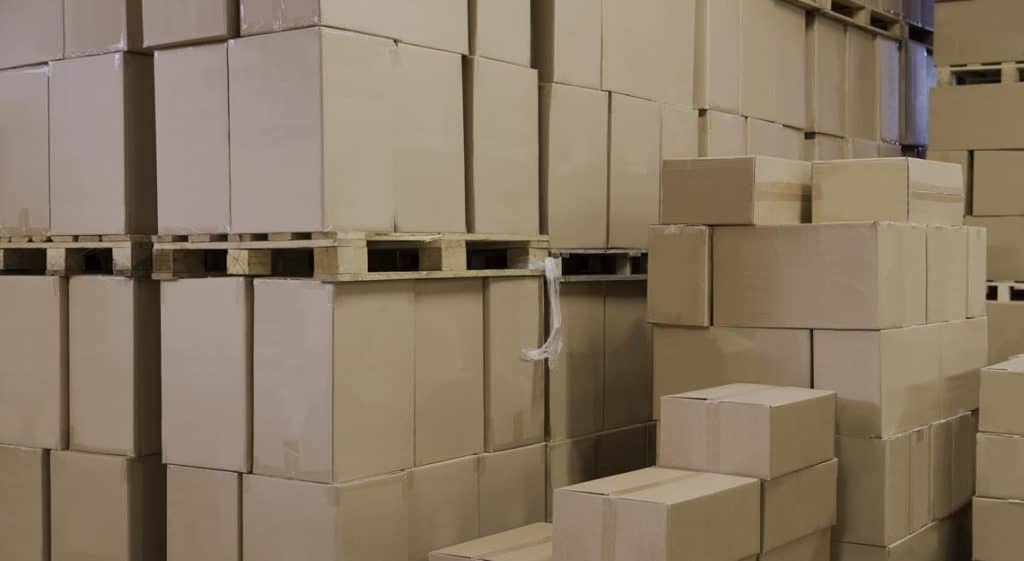8 Signs It May Be Time to Move Your Business
Whether your business is growing or better opportunities push you to move, relocation is serious business. It’s not only time-consuming and labor-intensive, but it can get costly, too. In an industry-wide survey, researchers found that businesses spend over $20 billion each year on local and long-distance moves. The best way to get the most out of your move is to anticipate this stage of growth for your business.
Owners looking ahead need to have a plan ready before they even start seeing the signs a move is necessary. This allows for the greatest flexibility in terms of strategic decision-making, both for the health of the company and its employees. So, when it comes to knowing when it’s time to make the move, what should be on your radar?
1. You Are Out of Space
The most obvious sign your current facility isn’t adequate for your operations is a noticeable lack of space. Growth should be an expected part of your business. Whether it’s hiring more employees, adding more products or installing equipment, you’ll need to strategically manage your current space to get the most out of your facility. At some point, however, even the most meticulous designs and layouts won’t contain your business needs.
The signs can be pretty obvious:
- Are employees losing productivity due to traffic jams in walkways?
- Are team members waiting to get access to areas or equipment they need because of space constraints?
- Are you postponing equipment installations because no free space is available?

If you’re experiencing one or more of these problems, it might be time to start looking for a new space or consider something like a warehouse relocation. You do have a few options if you’re still trying to make the most out of your current facility. Adding industrial shelving, for instance, can help maximize storage space. You can also consider adding mezzanine platforms, which can help you utilize vertical dead space more efficiently.
2. Your Business Has Changed
While space concerns can easily prompt a move, other business operations can provide signs your current facility isn’t enough. Businesses change, and when they do, their needs change, too.
If you’re currently moving through an evolution in your business, you should consider your current needs relative to your past requirements. Let’s say your company is moving to in-house fulfillment after working with a third-party logistics company. This means you’ll need to quickly expand to add necessary space for long-term storage, picking, packing and shipping operations.
Moving to a new facility means you’ll have plenty of room for all kinds of necessary warehouse equipment:
- Pallet racks
- Forklifts
- Pick modules
- Etc.
This is just one example of how a change in your business can prompt the need for a move. You can find many other reasons as to why a business might change, grow or evolve that would necessitate a location change.
3. Is It Time to Go Fully Remote?
Depending on what your business does, leveraging work-from-home technology may be a regular part of operations. During the COVID-19 pandemic, teams had to quickly adapt to meet the changing work landscape. This meant a shift toward fully remote and hybrid workforces.
But businesses often still have ties to physical locations like office buildings. While many employers are urging employees to come back into work, others are fully embracing the remote trend. If your business is remote-friendly, it can be both financially and strategically necessary to cut ties with old brick-and-mortar outposts.

Here are a few signs your business might be in that group:
- Have you adopted unified communications platforms that keep your team connected no matter where they are?
- Have you noticed an uptick in productivity, customer satisfaction or positive employee sentiment after switching to a remote or hybrid workforce model?
- Do you not need space for IT infrastructure, in-person offices or product storage?
If you’re thinking about switching to remote, the time has never been better. Not only can you use sophisticated and user-friendly technology to enable remote communication, but you already have a developed, in-person employee culture to bank on — making the culture switch to remote that much easier.
4. Going Brick and Mortar
On the other hand, your business may be looking for a physical location to meet your growing needs. In the age of the internet, many small businesses start with a solely online storefront. With companies able to provide storage and fulfillment, being location-less is a no-brainer for business operators looking for low-overhead during the early stages of growth.
At some point, though, a brick-and-mortar location may be necessary. Here are a few signs it may be time to make the switch:
- Are you spending more money on outside logistics and fulfillment?
- Have you been adding employees and need space for proper management?
- Is managing a remote workforce becoming a challenge?
Making the switch to a physical location can be a daunting one. Make sure you have developed a strategic movement plan and budget accordingly. You’ll need to consider all aspects of leasing or owning your own space. This means utilities, waste management and much more.

Looking for Help Moving your Business?
You should know the signs first. Here’s the information you need.CONTACT US
5. Your Current Space Is Lacking
It can seem like a building is just a building, but that’s not the case. In many ways, the quality of the location you pick will impact your employees and your daily operations. For instance, if your operation requires shipping, adequate space will be necessary for freight trucks and other heavy equipment. If your current location is lacking in those areas, it may be time for a move.
Of course, that’s not the only reason. You may be growing your staff and see a lack of parking as an obstacle for your business. It might also be the case that a lack of adequate amenities is causing stress on your staff or harming productivity. Another common complaint is with property management. If repairs aren’t happening in a timely manner, it can lead to delays. All of these are valid reasons to want to move your business.
6. Your Costs Are Too High
It should come as no surprise that just as businesses change, so do prices. It can sneak up on you, but if you’re looking over your budget and seeing more and more capital go toward areas like rent or utilities, it can be a great reason to consider a move.
Rent prices change quite constantly. If you’re looking at renewing your lease, it comes with a hefty hike in prices. While your location may not have been hot property 20 years ago, it could be in an area where prices are rising — and you’ll likely be the one eating that change in rent costs.
Another area where costs rise is energy use:
- Electricity
- Natural gas
- Other local utilities (waste disposal, etc.)
Because these prices react to local supply and demand, it’s always an option to find greener pastures and move to a location where costs are lower.
7. Your Industry Is Changing
Industries are constantly changing. Even legacy brands with decades of experience need to adapt to shifting trends and consumer needs. Sometimes, these changes mean a move is a strategic option. One way this is currently happening is the switch to remote work for many in tech and other industries.
Take call centers for example. While it was once a requirement to have large office space to house workers, these days, businesses can easily leverage call center services to switch to fully remote work. When this happens, all that office space instantly becomes unnecessary.
Another way industries change is in demand. For instance, while personal computing was a niche market in the 1980s and early 1990s, businesses like Apple are now household names. What was once a small facility with maybe a dozen employees is now a massive multinational corporation with hundreds of facilities across the globe.
8. You Want to Be Closer to Your Customers
If you’re a customer-centric business, the closer you are to your customer base, the better the experience. Let’s say you’re a local HVAC company. The closer you are to your customers, the quicker you can provide service and the less distance your employees will have to travel for jobs.
Another reason you might want to be closer to your customers is if you are a business that provides something to the community. If you are, say, a plumbing supply company, you’ll want to be in a central location so both local contractors and individual customers can easily come and shop.
Below are some signs you may need to make the move for your customers:
- Do customers complain about traveling to your facility?
- Are team members spending too much time or money traveling to a specific area or location?
- Would it be a strategic move to switch locations (being in a new county, etc.)?
Whatever your reason for moving your business, it’s going to be a lot of work. But if you plan well and enlist the help of providers like East Coast Storage Equipment, it will be much easier.